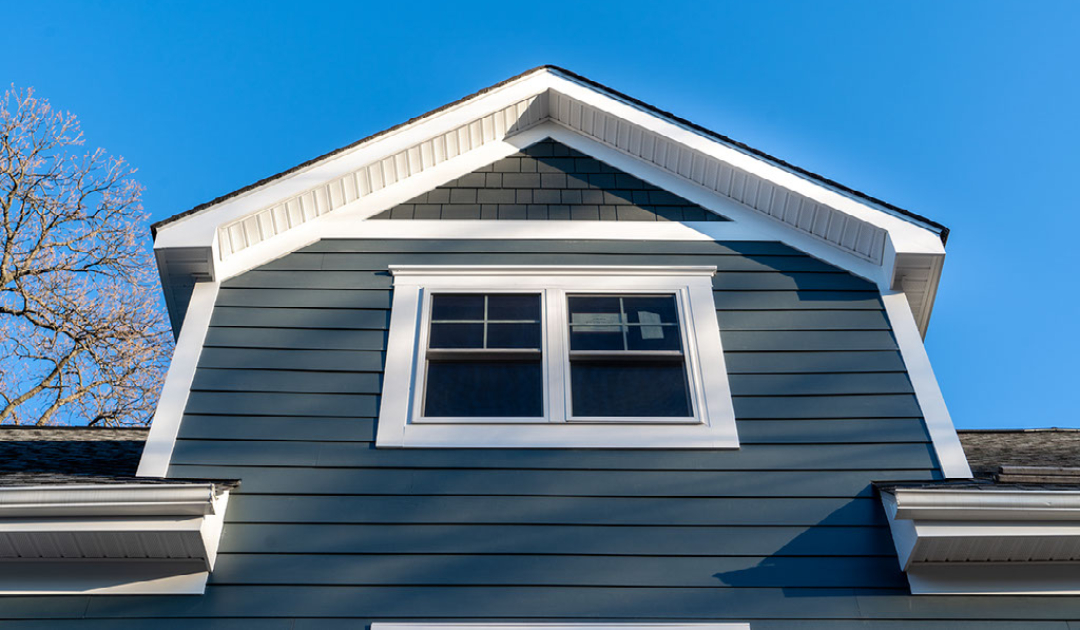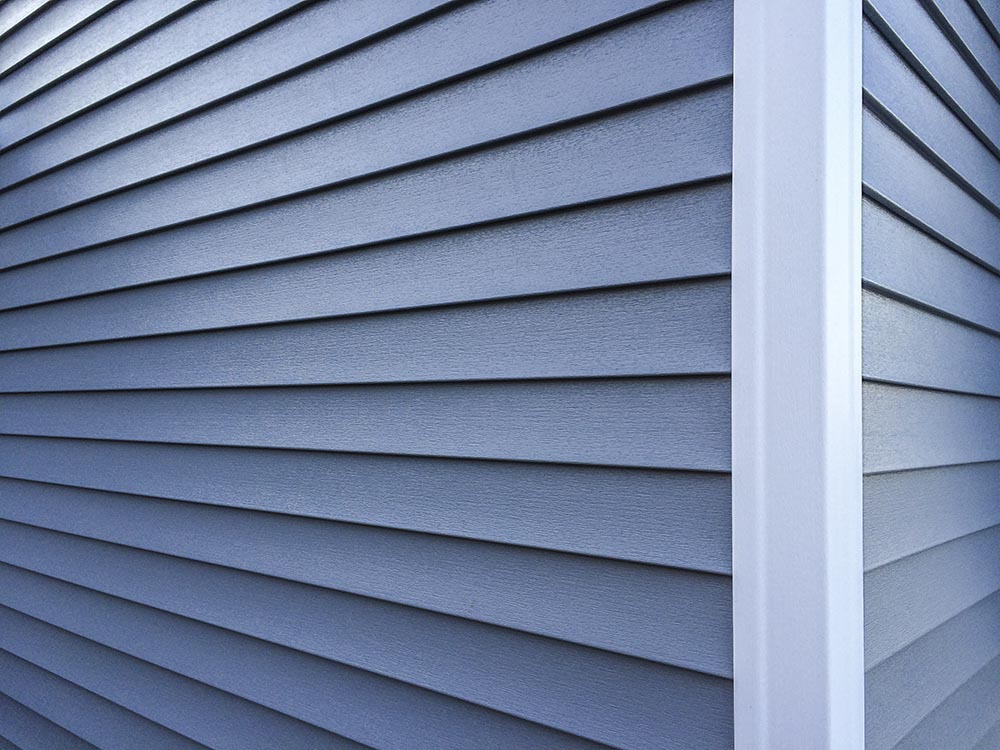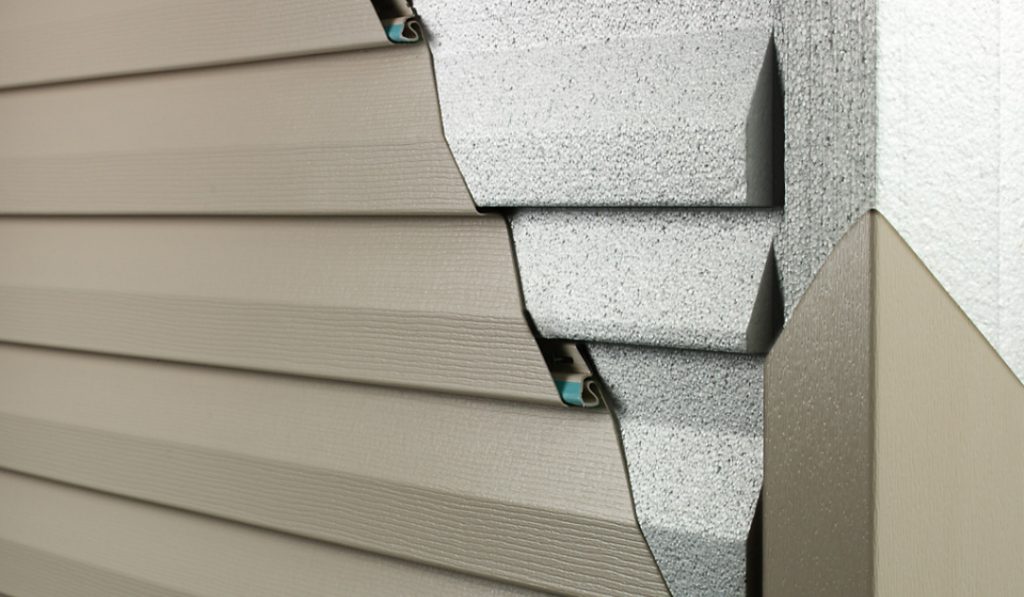Published on: May 25, 2022

Insulated vinyl siding offers outstanding benefits and protection for your home. Of course, it isn’t the only way to reduce your energy bills and protect our natural resources, but if it’s time to replace your siding, evaluating a siding type based on its energy use will help you look at the total cost of the siding over its lifetime and the benefit you’ll get from installation.
So what is insulated vinyl siding, what benefits does it offer your building project and what are some things you should know before installing this type of siding? Get answers to your many questions about this type of siding by reading our blog. Or talk directly to an expert by calling 253-766-5414.

The outward appearance of insulated vinyl siding is the same as traditional vinyl siding. However, what you don’t see is what’s behind the siding.
It has a foam-core backing that wraps your home or commercial building tightly to keep its temperature-controlled air inside. The foam core adheres to the outer vinyl material and is form-fitted for a strong seal. The foam part of the siding can be as much as 1.25-inches thick. The profile of the siding style and type you choose will impact the total thickness of the insulated foam due to the profile of that siding.
It offers incredible protection from air and moisture getting inside your home for better energy efficiency. It is also very effective at reducing the amount of outside noise you hear while you’re inside the building.
Thanks to its thickness and durability, it doesn’t buckle or dent the same way that traditional vinyl siding does, which means when it is under pressure, such as during wind storms, it stands a better chance of still looking great afterward. And with time, you’re less likely to experience gaps in the seams since the pieces fit together tightly.
You’ll get a super clean and smooth appearance when you install this siding on a building because it contours to the wall structure well and offers very clean corners and edging. And your trim pieces will attach smoothly and look great too.
Wondering if you should use insulated vinyl siding on your home? Here are four main reasons why homeowners and building managers choose this siding type.
Insulated siding allows your home to control the temperature more consistently so that no matter where you’re at in your house, you can enjoy a comfortable temperature all year long.
Your home’s siding helps your home control its temperatures year-round. No matter what siding you use, it will probably improve your home’s energy efficiency since modern siding is better for protecting your home’s energy. But insulated siding provides that added layer of protection to insulate your home from the outdoors.
Have a noisy neighborhood or live near a major roadway? Insulated siding can decrease the noise levels from outside by up to 45 percent! Talk to your siding contractor to learn more about how you might experience this change.
Insulated vinyl siding helps your home deter water and move it away from the walls, which helps prevent mold growth. Plus, when it’s cold outside, you’ll feel cozy inside since the home is more insulated. And strong wind gusts will never make their way inside. You’ll feel comfortable no matter what.
The strong fit and contour of insulated siding make it slightly more attractive for your home and for a longer time. It won’t dent and experience damage the same way standard siding does, which makes it an attractive option for keeping your home looking great over the decades of life vinyl siding provides.
Naturally, it depends on the siding manufacturer and style you select for your home. However, across the board, insulated siding adds about 20 percent to the cost of materials for a siding project. Because the installation process is similar to that of standard siding, labor costs should be the same regardless of whether you use insulated or non-insulated vinyl siding.
That doesn’t mean you want just anyone installing your siding though. Make sure you select a contractor who has experience working with this type of siding. Using an inexperienced contractor could mean you don’t get the full benefits of purchasing insulated vinyl due to gaps or imperfections in the installation.
So is insulated siding worth the added cost? Ideally, you’ll only have to replace your siding once or twice in your lifetime. While the upfront cost of re-siding your home can carry a large price tag, it’s worth the protection it offers. And insulating your siding offers that added touch of improved energy efficiency that many homeowners appreciate during the lifetime of the siding installation.
Yes, insulated vinyl siding reduces energy bills, which can offset the higher cost of installing this siding on your home compared to standard vinyl products. Plus, it also offers impact damage, meaning you experience fewer costly repairs to your home and siding during its lifetime.

House wrap offers a crucial layer of protection for your home. No matter the building project, you should use house wrap under your siding to offer moisture protection and ensure water vapors can exit your home effectively.
Vinyl siding is the most popular form of insulated siding. However, you can also get insulated versions of steel, fiber cement and aluminum siding. These products offer an estimated 20 percent annual energy bill savings.
If you’re looking for the most energy-efficient options for your home, consider the R-value of the various siding options. However, you should realize that siding is only a small part of your home’s total R rating. Building materials, house wrap and a variety of other factors impact the total R-value.
To give you an idea of how various types of siding stack up, here’s a look at the average R-value for some popular options.
The quality of the installation as well as the product manufacturer for each siding type will make a big difference in how energy efficient your home is with your new siding. Be sure to talk to your siding contractor about R ratings and how various options stack up. But don’t forget to consider other factors too, like what house wrap the contractor uses.
Ready to improve your home’s energy efficiency with new siding? It’s time to find the best siding installation team with access to and knowledge about the best materials to ensure your insulated siding is installed correctly and offers the greatest benefits throughout its lifetime.
2FL Windows, Siding and Roofing offers superior workmanship alongside outstanding products. One of our preferred vendors is Kaycan, which offers a line of high-quality insulated siding options and styles. Schedule a free in-home consultation to learn more or call us at 253-766-5414.
Further Reading:
Comments are closed.

Read the latest articles about siding.

[…] you’re looking to transform your vinyl siding or hide discoloration, you might be able to paint your vinyl siding. But like other changes to the […]
[…] Want to Improve Your Building’s Comfort? Look Into Insulated Vinyl Siding […]
[…] Insulated siding is the best way to improve your energy bills if you’re planning to replace your siding. […]
[…] contrast to vinyl or wood siding, James Hardie siding is not vulnerable to pests and other insects due to its strong […]
[…] Want to Improve Your Building’s Comfort? Look Into Insulated Vinyl Siding […]